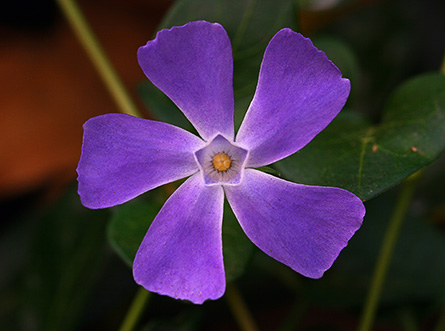
This weekend I read an article by Wendy L. Turner in Nature Photographer Magazine, and learned a new tip on how to get sharper flower photographs: position your camera so the sensor is parallel to the most important plane of the flower.
When photographing flowers, you will most likely use a telephoto or macro lens with a wide aperture (to get that great blurry background), so proper focus is very subtle and extremely difficult to achieve.
Positioning your camera so the sensor is parallel to the most important plane of the flower will help put all important parts of the flower at the same distance from your sensor, so all those parts will be in sharp focus.
To illustrate this idea, consider the photograph at the beginning of this post–it was taken with a 100 mm macro lens, at f/5.6. This flower is almost perfectly flat, so my sensor was almost perfectly parallel to its petals. If my sensor wasn’t parallel to the petals, then one side of the flower would have been out of focus.
So, when you’re photographing a flower, don’t just think about what aperture you should use, but also consider what the most important plane of the flower is, and make sure your sensor is parallel to that plane. Otherwise, you won’t get the sharp focus you’re looking for.
Nice article..i like picture that include depth ..bt the the closer we focus a lens, the less depth of field we have in flower photography and to get through this issue i align my camera with the flower, as much as possible that is, make the film plane –the back of my camera – parallel with the plane of the subject. If the two are aligned perfectly, a large depth of field isn’t necessary…i also try to capture flowers in bunch and concentrate more on the background..
I completely agree. The flower in the article above has perfectly positioned. But when the flowers are facing sky or positioned in some other angles, and we cant get on top of them to get such parallel positioning to shoot, I think it would be nice to focus on either stamens or other areas. Then at least the petals will not be unevenly focused and in the stamens or the pistil parts are very attractive, they would certainly help.